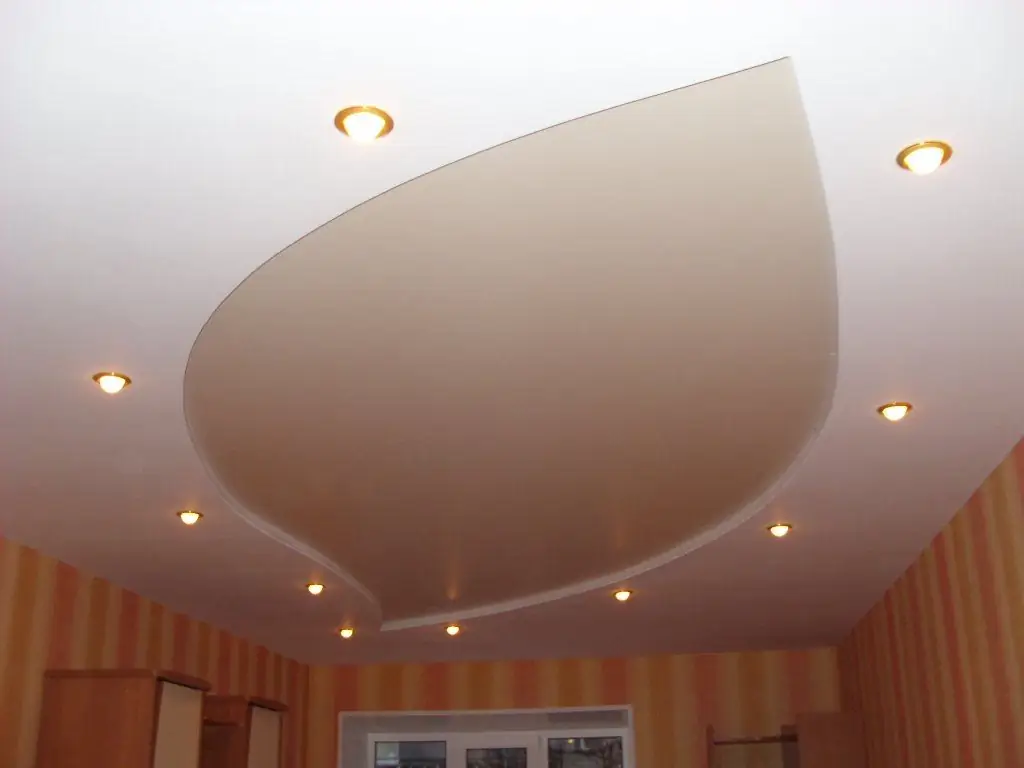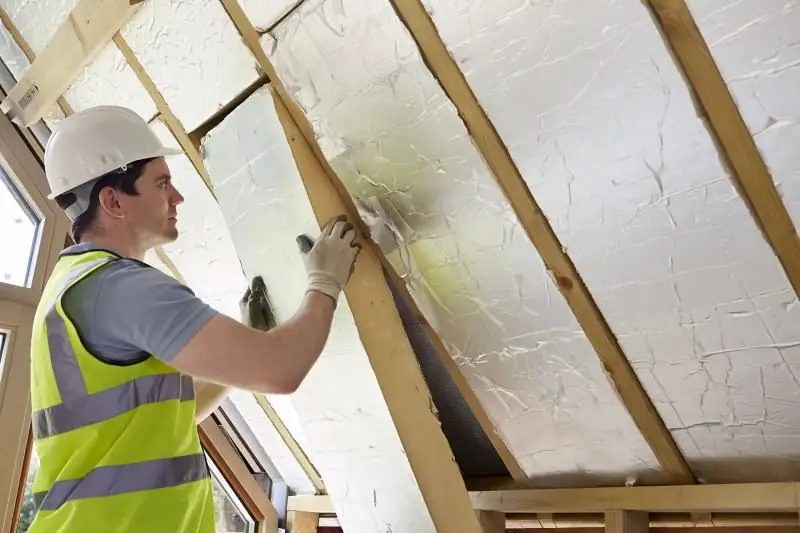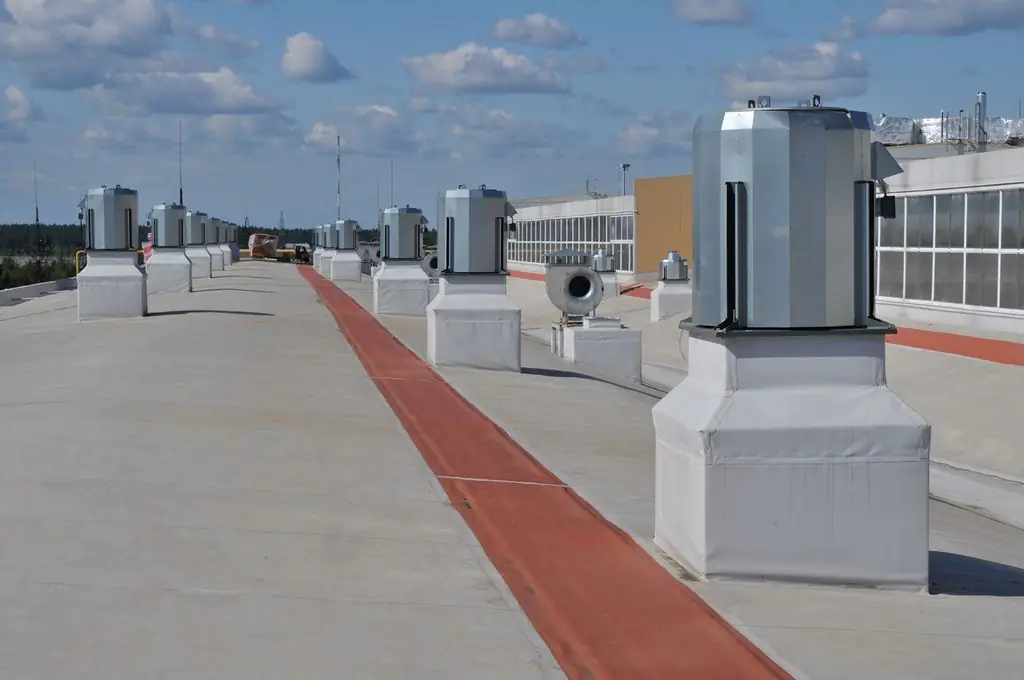
Table of contents:
- Author Bailey Albertson [email protected].
- Public 2023-12-17 12:53.
- Last modified 2025-06-01 07:32.
How to make a drywall arch yourself

Many people try to make repairs in the apartment with their own hands. Previously, in order to transform a room, it was necessary to break down walls, lay bricks and mix mortar. Nowadays, most of the dirty and difficult jobs can be avoided by using drywall. With the help of this material, you can quite simply and quickly make an arch in the doorway with your own hands, as well as align the walls, ceiling or build a partition.
Content
-
1 Types of arches, their advantages and disadvantages
-
1.1 Types of arches
1.1.1 Video: types of drywall arches
- 1.2 Advantages and disadvantages
-
- 2 Tools and materials
-
3 How to make a drywall arch
-
3.1 Marking the arch
- 3.1.1 Marking a semicircular arch
- 3.1.2 Marking an elliptical arch
-
3.2 Cutting drywall and preparing structural elements
- 3.2.1 Cutting drywall
- 3.2.2 Video: Cutting drywall with a knife
-
3.3 Bending drywall
- 3.3.1 Dry method
- 3.3.2 Wet method
- 3.4 Preparation of the frame and assembly of the structure
- 3.5 Finishing
- 3.6 Video: how to make a drywall arch yourself
-
Types of arches, their advantages and disadvantages
Each person wants his home to be cozy and unique, so he tries to use modern technologies and various decorative elements when carrying out repairs. One of the most common solutions that you can implement yourself is a drywall arch. It serves as a decoration for the room and helps to complete its zoning.

A drywall arch helps to divide the room into functional zones
A drywall arch allows you to visually expand the space, which is very important in small apartments. It gives the room a touch of modernity and fits perfectly into almost any style of a house or apartment. With the help of such a solution, it is possible to get a sense of spaciousness, increase the area of the room and its functionality.
Types of arches
An arch can be used to decorate a room in a house, apartment, office or any other place. A large selection of shapes and types allows you to find a solution for any design style.
The most popular are the following types of arches:
-
classic. It has regular and strict outlines, therefore it can be combined with any design. Such an arch helps to change the appearance of the room, but completely retains the style of its design and does not distort the shape of the doorway;

Classic arch The classic arch has a regular and strict shape, therefore it can be combined with any design
-
in the form of a rocker. This is an original solution that also suits most interiors;

Rocker arch The rocker-shaped arch looks original and suits most interiors
-
Slavic or "Romantic". Here the corners are rounded, and the central part remains straight. This design is suitable for wide doorways;

Slavic arch Slavic arch has rounded corners with a straight central part and is suitable for wide openings
-
"Modern". It has the shape of an ellipse and differs from the classic version in that it is more flattened at the bottom. Most often, an arch in the "Modern" style is used when decorating a kitchen or balcony;

Arch "Modern" The upper part of the "Modern" arch is elliptical
-
British. It allows you to visually increase the height of the doorway, since it has an elongated part of the arch. It is perfect for decorating a room with low ceilings;

British arch The British arch, due to its elongated shape, is suitable for rooms with low ceilings
-
in the form of a trapezoid. This solution is most often used when decorating offices;

Trapezoidal arch A trapezoidal arch is commonly used for office decoration
-
eastern. It is recommended to use it only when the whole room will be decorated in this style.

East arch The eastern arch is recommended to be used only when similar shapes are present in the entire design of the room.
When creating an arch, you can combine different types of structures, the main thing is to do it correctly, then the result will be beautiful and unique
Video: types of drywall arches
Advantages and disadvantages
Before deciding whether you want to make a drywall arch in your house, you need to figure out what pros and cons it has.
Among the advantages of this design, it should be noted:
- beautiful appearance;
- simple and quick installation;
- light weight, therefore, the creation of a reinforced frame is not required;
- absence of wet and dirty processes during work;
-
the ability to hide communications, it can be both wires and water pipes, air ducts, etc.;

Wiring hidden in the arch The presence of free space inside the arch allows you to hide not only wires, but also other communications
- high rates of fire resistance. When creating an arch near a fireplace, stove or gas stove, you can use a special heat-resistant drywall;
- the smooth structure of drywall allows you to apply the topcoat without complicated preparatory work;
- flexibility. The material lends itself well to dry bending. For a steeper radius, you will need to wet the sheet.
Disadvantages of this solution:
- even moisture-resistant drywall cannot withstand direct contact with water for a long time. If you are flooded by neighbors, then there is a possibility that the arch may be damaged;
- relatively low mechanical strength. Although the arch is at a height and it is difficult to damage it, you still need to remember that it is made of drywall;
- after creating an arch, it is required to close up the seams, the caps of the screws and only then cover it with a finishing material.
There are practically no disadvantages of a drywall arch, and given the large number of advantages, it becomes clear why such a solution is so popular and in demand
Tools and materials
The process of making a drywall arch is not very difficult, so you can cope with this task yourself without the involvement of specialists.
To complete the work you will need:
- screwdriver;
- electric drill;
- pliers;
- a knife or nail file for cutting drywall;
- scissors for metal;
- pencil;
- cord or rail to create an impromptu compass;
- measuring instruments;
- needle roller;
- sandpaper for grinding putty.
In addition, you need to purchase the following materials:
- metal profiles;
- gypsum plasterboard sheets, drywall with a thickness of 6.5 mm is best suited to create an arch;
- dowels;
- screws;
- serpyanka ribbon;
- putty;
- perforated corner;
- primer;
-
topcoat, usually paint or wallpaper.

Tools and materials for making drywall arch To create a drywall arch you will need simple, affordable tools and materials.
How to make a drywall arch
Before starting work, you need to prepare the doorway. At this stage, the door leaf and frame are dismantled. After that, the surface is cleaned from exfoliated materials, dust and dirt are removed.
Arch markings
A conventional arch consists of two arcuate and one curved element. The main difficulty lies in creating arched parts.
There are many types of arches, they differ among themselves both in size and shape. It is enough to learn how to make a semicircular and elliptical structure, after which it will be possible to easily cope with the creation of all other types of arches.
Marking a semicircular arch
When creating a semicircular arch, marking is done using a homemade compass:
-
Prepare a compass. For this, a pencil is tied to a thread. If a rail is used, then the pencil is attached to it with adhesive tape.

Homemade compasses To create a homemade compass, a pencil is fixed on the bar with tape
-
Measure the width of the doorway. By dividing the result in half, determine the size of the radius.

Opening width Measure the width of the opening, half of it is equal to the radius of the arch
-
Mark out the arch. A self-tapping screw is screwed into a drywall sheet, a cord is tied to it or a rail with a pencil is attached and the markings are made. Thus, both halves of the arch are marked.

Arch markings To mark the sheet, a self-tapping screw is screwed into it, a rail with a pencil is attached to it and the markings are made
-
Cut out the side parts. This is done along the outlined line with a jigsaw or knife.

Side of the arch Two side parts of the arch are cut along the marked line.
Elliptical arch markings
Marking an elliptical arch is a more complex process, but you can also handle it yourself. Modern technology allows you to do everything using a computer. There are special programs in which it is enough to enter the required dimensions and get the finished result. Then the template is printed in real scale, for which several sheets of paper are glued together.
You can also perform the markup using available tools. Consider a method by which you can mark elliptical arches of any height and width:
-
On a sheet of drywall, mark the width and height of the arch. After that, you need to divide both segments into the same number of parts. The more parts you get, the more accurately you can markup.

Marking the width and height of the arch On a sheet of drywall, the width and height of the arch are noted, after which the segments are divided into an equal number of parts
-
The points with the corresponding numbers are connected together. It is necessary to connect the marks 1-1, 2-2 and so on until the last point. To do this, use a pencil and a ruler. The points of intersection of the drawn lines create the outline of the side of the arch.

Connecting dots Points with the same numbers are connected to each other
- Connect contour points. It remains to connect the resulting points with a smooth line. The other side of the sheet is marked in the same way. After that, the resulting element is cut out and the second is made according to its template.
Drywall cutting and preparation of structural elements
After marking the parts, they must be cut out. If you follow the recommendations of experts, then at this stage there will be no difficulties.
Drywall cutting
The work is performed in the following sequence:
-
The first layer of cardboard and part of the gypsum are cut. For this, a sharp knife is carried out several times along the marked line.

Cutting the first layer of cardboard and a piece of plaster Using a knife, cut the first layer of cardboard and part of the gypsum
-
Break off the core of the sheet. To do this, lightly tap on the edge of the incision and, pressing on the sheet, bend it.

Breaking the sheet Lightly tapping on the cut line breaks the sheet
-
Final cutting. The sheet is folded in the opposite direction, after which the cardboard is cut from the reverse side.

Cutting the sheet Bend the sheet and carry out its final cutting
- Removal of roughness. To do this, sandpaper the cut edge of the sheet.
It is much easier to cut drywall with a jigsaw, since with it you can get smooth edges, which do not need to be processed further
Video: cutting drywall with a knife
Drywall bending
Both dry and wet methods can be used to bend an arch element installed between the two sides.
Dry method
Drywall tends to bend quite easily. If the bending radius is up to one meter and a sheet with a thickness of 6.5 mm is used, then you can simply attach the gypsum board to the frame. Installation is carried out from the center of the sheet and is fixed every 15 cm.
If the bend has a smaller radius, then transverse cuts are made on the back of the sheet using a sharp knife along the entire length. After that, the sheet takes the required shape well.

To obtain a small bending radius of the sheet in a dry way, it is cut from the inside into several strips.
Wet method
The wet method of bending drywall is based on the fact that the moistened sheet easily takes the required shape, and after drying it retains it. This method makes it possible to bend sheets with a significantly smaller radius than can be done with the dry method.
If the sheet thickness is 6.5 mm, then using the wet method it can be bent along a radius of up to 30 cm
The work is done in this order:
-
Moistening the leaf. This can be done using a needle roller, with which the sheet is rolled from the back side. After that, it is moistened using a soft brush or foam roller. Thus, not only cardboard is moistened, but also gypsum, since moisture penetrates through the small holes made by the roller.

Needle roller Using a needle roller, holes are made in the sheet for better moisture penetration
-
GKL bend. A frame is made in the shape of an arch, a sheet of drywall is laid on it and pressed with a load. After the gypsum board dries, it will retain its predetermined shape. You can immediately mount a wet sheet on the arch. In this case, the distance between the fasteners should not be more than 30 mm. It is recommended not to sink the caps of the screws completely at once, but to do this after the sheet has dried.

Drywall bending The wet sheet is bent in a pattern and pressed with a load
If a needle roller is not available, a damp cloth can be used to wet the drywall sheet, but this method takes longer
Frame preparation and assembly of the structure
After preparing all the elements of the arched structure, you can proceed to creating the frame:
-
Installation of guide profiles. Metal guides are fixed on the top and side of the doorway. In this case, it is necessary to retreat from the edge of the wall to the width of the gypsum board, so that after installation the sheet is flush with the main wall. To fasten the profile, use dowels with a length of 40 mm and twist them in increments of 0.3-0.4 m.

Installation of guide profiles Metal guide profiles are fixed on the top and side of the doorway
-
Fixing side elements. On the installed guides on both sides of the opening with the help of self-tapping screws, fix the side elements made of plasterboard.

Fixing side elements The side parts of the arch are fixed to the profiles
-
Creates a curved profile. Measure the length of the arch and cut off the required profile piece. In order to bend it, cuts are made on the edges with metal scissors every 5-7 cm. It is better to use an L-shaped profile, then only one edge will have to be cut. The profile is bent to the shape of the arch and fixed on it with self-tapping screws.

Creating a curved profile On the edges of the profile, metal scissors make cuts every 5-7 cm and bend it according to the shape of the opening
-
Creation of jumpers. The distance between the side parts of the arch is measured and the lintel is cut from the metal profile. They are fixed with a step of 7-14 cm. Thus, they create a frame for fixing the curved part of the arch and reinforce the entire structure.

Creating jumpers Jumpers are mounted between the curved profiles, onto which the curved drywall sheet will be attached
-
Fastening the curved arch element. They do this with self-tapping screws.

Fastening a curved arch element Using self-tapping screws, a curved sheet of drywall is fixed
Finishing
After creating the arch, you can proceed to its finishing, which includes the following steps:
-
Installation of perforated corners. To make the corners stronger, perforated corners are fixed on them.

Installation of perforated corners Perforated corners are installed at the corners
-
Seam sealing. All existing assembly seams are closed with a serpyanka tape and sealed with putty. In addition, the caps of the screws are smeared over.

Sealing of seams All seams and caps of self-tapping screws are sealed with putty
- Surface cleaning. It is necessary to wait until the putty is dry, and then, using sandpaper, smooth out all the protrusions and irregularities.
- Surface priming.
-
Arch putty. The entire arch is completely putty. When dry, sandpaper it to obtain a smooth and even surface.

Arch filler The entire surface of the arch is completely putty
-
Topcoat application. Most often, a drywall arch is painted or pasted over with wallpaper, but other finishing materials, for example, fabric or artificial stone, can also be used.

Artificial stone finishing of the arch Artificial stone finishing of the arch gives the interior a stylish look
After the finishing material has dried, the arch is ready. As you can see, there is nothing difficult about creating a drywall arch yourself. Any home craftsman can handle this task.
Video: how to make a drywall arch yourself
If at first it may seem that creating an arch from drywall is a difficult task that only great craftsmen can do, now it is clear that you can cope with it yourself. This solution allows you to revive the interior in the shortest possible time and with minimal costs, make it distinctive and inimitable. Do not be afraid to experiment, follow the advice of experts and then you will get a drywall arch no worse than that of professionals.
Recommended:
Work At The Summer Cottage In The Autumn (with Video)

Description of autumn work at the summer cottage. Recommendations for harvesting and storing crops, warming trees, preparing the soil for winter
How And What To Paint A Drywall Ceiling With Your Own Hands + Video

Features of painting a plasterboard ceiling with your own hands. Choosing the right paint. step by step process
Windows 7 Device Manager: Where And How To Open It, What To Do If It Won't Open, Won't Work, Or Is Empty, And If It Doesn't Have Any Ports, Printer, Drive, Monitor Or Video Card

Windows 7 Device Manager. Where to find it, why you need it. What to do if it does not open or if you encounter unexpected problems while working with it
Insulation Of The Roof From The Inside With Foam: Description And Characteristics Of The Material, Installation Stages + Video And Reviews

How to choose foam for roof insulation. How to properly form a roofing cake. Styrofoam stacking and cutting methods
Do-it-yourself Membrane Roof Installation And Repair, Equipment For Work + Video

The choice of membrane for the roof. Installation technology depending on the selected membrane. Tool for work
